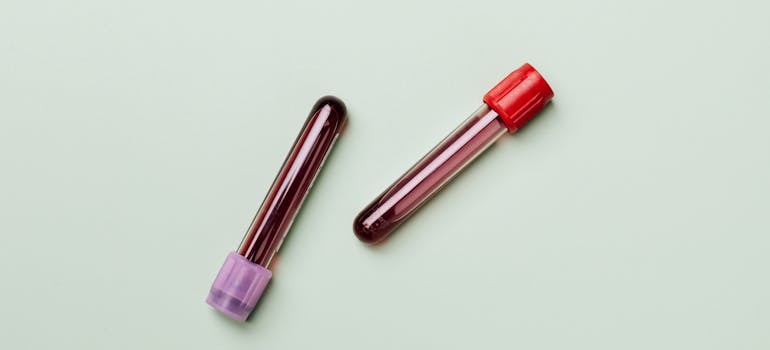How Long do Opioids Stay in Your System?
How long do opioids stay in your system? This question interests both people managing pain with medication and those working toward recovery from opioid addiction. Knowing this can help plan medication use, understand when withdrawal might start, and ensure readiness for any drug tests. It’s especially useful in a detox center in Pennsylvania, helping both patients and doctors make better decisions about treatment and recovery plans. Simple awareness of how opioids process through the body supports safer and more informed choices in managing or overcoming opioid use. Additionally, this knowledge is essential for monitoring progress towards recovery, providing a clearer timeline for achieving a drug-free state. It also empowers people to communicate more effectively with healthcare providers about their concerns and needs during the recovery process.
Jump to Section
What are Opioids?
Opioids are drugs recognized for their ability to relieve pain and fall into two primary groups: prescription opioids and illicit opioids. Medications such as oxycodone, hydrocodone, and morphine are examples of prescription opioids, prescribed by healthcare professionals for pain management. On the other hand, illicit opioids, like heroin, are used without a prescription and against the law.

Opioids are primarily used in medicine to manage moderate to severe pain, such as the discomfort experienced after surgery, injury, or in certain chronic conditions. However, the risk of addiction and misuse necessitates careful, medically supervised use of these drugs. If you or someone you know is facing challenges with opioid dependence, support and resources for recovery are available through opioid treatment programs in Pennsylvania.
Factors Affecting Opioid Detection Times
Knowing the time frame opioids remain detectable in your system is important for several reasons, including securing proper medical treatment at trusted drug rehab centers in Pennsylvania, managing legal situations, and taking care of your personal health. How long opioids are detectable varies greatly among individuals, based on a variety of personal factors. Here are the primary factors that influence the detection time of opioids in your body:
- Metabolism: The speed at which your body processes substances can affect how long opioids are detectable. A faster metabolism may shorten detection times.
- Age: Older individuals often have slower metabolisms, which can extend the time opioids remain in the system.
- Body Mass: Higher body fat percentages can result in opioids staying in the body longer.
- Hydration Levels: Being well-hydrated can help shorten the detection window for opioids.
- Liver Function: The liver plays a key role in metabolizing opioids. Poor liver health can lead to longer detection times.
- Dosage: Higher doses of opioids can increase the duration they are detectable in the system.
- Frequency of Use: Regular or frequent use of opioids can extend the time they remain detectable in your body.

What is Opioid Metabolism?
Opioid metabolism refers to the breakdown and processing of opioids within the body, primarily occurring in the liver. This organ transforms opioids into various metabolites, such as noroxycodone and norhydrocodone, which are typically what drug tests target instead of the original opioid. This metabolic process of opioids can also induce side effects, with itchiness being a common reaction to opiate consumption.
Detection Times by Opioid Type
The detection times for opioids can vary significantly depending on the type of opioid and the individual’s metabolism. Here’s a breakdown of some common opioids and general guidelines for their detection times:
- Morphine: Typically detectable in urine for 2-3 days after use.
- Codeine: Usually detectable in urine for 1-2 days after use.
- Heroin: Urine tests can detect heroin for up to 3 days after use.
- Fentanyl: Detectable in urine for 1-3 days after use, but this can vary due to its potency.
- Oxycodone: Generally detectable in urine for 2-4 days after use.
It’s important to note that these are general guidelines and actual detection times can vary based on several factors, including the individual’s metabolism rate and the specific chemical structure of the opioid. The body metabolizes some opioids more quickly than others, resulting in shorter detection windows. For instance, the body processes heroin, codeine, and morphine faster than fentanyl and oxycodone leading to shorter periods during which they can be detected.
Testing for Opioids: Methods and Their Detection Window
Detecting opioids in the system serves various purposes, ranging from medical treatment to legal matters and workplace policies. There are multiple testing methods, each offering different benefits, limitations, and detection windows. Knowing these details aids in selecting the best test for a particular scenario. To assist in choosing the right test for your needs, an overview of the most common testing methods will be provided, including:
- Urine tests
- Blood tests
- Saliva tests
- Hair follicle tests
- Sweat patches
Urine Tests for Opioids
Urine tests are the most commonly used method for detecting opioids. They are non-invasive and capable of identifying the presence of most opioids for 1-4 days after use, with the duration varying based on the specific opioid and metabolism rates.
Urine tests are popular because they are easy to administer, relatively inexpensive, and have a longer detection window compared to some other methods. However, they cannot determine the exact time of drug use or the level of impairment.
Blood Tests for Opioids
Blood tests offer a shorter detection window for opioids, typically up to 24 hours. They are more invasive than urine tests but provide a more accurate measure of the current level of opioids in the system.
Blood tests are often used in medical settings to diagnose overdose or poisoning, or in legal situations where recent drug use needs to be confirmed. The main limitations are the need for trained personnel to draw the blood and the higher cost compared to urine tests.

Saliva Tests for Opioids
Saliva tests are less invasive than blood tests and can detect opioids for up to 48 hours after use. They are easy to administer and provide quick results, making them suitable for workplace testing or roadside checks for impaired driving.
The detection window is shorter than that of urine tests, but saliva tests are useful for detecting recent drug use. However, the presence of food or drink in the mouth can affect the accuracy of the test.
Hair Follicle Tests for Opioids
Hair follicle tests can detect opioid use over a longer period, typically up to 90 days. They are useful for assessing long-term drug use but are more expensive and require laboratory analysis.
Hair tests cannot detect recent use within the past few days but are valuable for understanding patterns of drug use over time. The main limitation is that hair color and chemical treatments can affect the accuracy of the test.
Sweat Patches for Opioids
Sweat patches are worn on the skin and collect sweat over a period of time, usually one to two weeks. They can provide continuous monitoring of opioid use but are less commonly used than other methods.
Sweat patches are mainly used in research settings or for monitoring individuals on probation or parole. The patch must be worn continuously, and the results can be affected by environmental factors and skin conditions.
The Role of Detox and Elimination
Detoxification is a crucial step in the journey to recovery from opioid addiction. The primary goal of detox is to safely eliminate opioids from the body while managing withdrawal symptoms. This vital step is available through various programs, from inpatient care to outpatient options like the partial hospitalization program rehab in Pennsylvania.
During this stage, healthcare professionals monitor the patient’s condition closely and administer medications to reduce withdrawal symptoms, making the detox process more bearable. The duration and challenge of detox vary based on the type and quantity of opioids used, the duration of addiction, and the patient’s overall health. Beginning with detox, the process towards a life without drugs starts, laying the groundwork for continued treatment and recovery.

Natural vs. medically assisted detoxification
Natural detoxification involves allowing the body to eliminate opioids on its own without medical intervention, often referred to as “cold turkey” detox. This method can be challenging due to the intense withdrawal symptoms that can occur, such as nausea, pain, and anxiety. While natural detox might appeal to those seeking a drug-free approach, it can be risky and less effective without professional support.
Medically assisted detoxification, on the other hand, involves the use of medications and medical supervision to manage withdrawal symptoms and reduce cravings. This approach is considered safer and more comfortable, as it provides a controlled environment and medical support. Medications like methadone or buprenorphine are often used to ease the detox process and help with long-term recovery. Medically assisted detox is generally recommended for those with severe addiction or those who have struggled with natural detox in the past.
How the Half-Life of Opioids Affects Detection Times
The half-life of a drug is the time it takes for half of the drug’s active substance to be eliminated from the body. This concept is key in understanding how long opioids remain detectable in the system.
For example, if an opioid has a half-life of 4 hours, it means that after 4 hours, only half of the original amount remains in the body. After another 4 hours, only a quarter remains, and so on. The half-life varies among different opioids and is influenced by factors such as metabolism and the individual’s health. Understanding the half-life helps in managing dosage, timing of medication, and predicting how long withdrawal symptoms may last during detoxification.

Legal and Medical Implications of Opioid Detection
In medical environments, understanding how long opioids remain in the system is vital for healthcare professionals at places like rehab centers in Pennsylvania to design effective treatment schedules and observe patient progress accurately. This knowledge allows for the safe administration of medications and effective management of withdrawal symptoms during the detoxification process.
In legal and sports contexts, the detection of opioids is critical for employment drug testing, criminal investigations, and anti-doping efforts. Employers may conduct drug tests to ensure a secure workplace, while legal authorities may utilize them in investigating drug-related crimes. Athletes undergo drug testing to promote integrity and fairness in competition. The presence of opioids in these tests can lead to severe outcomes, such as termination of employment, legal repercussions, or being barred from competitions.
Strategies to Reduce Opioid Presence in the System
While the desire to clear opioids from your system swiftly is understandable, approaching this task with caution is necessary. Rushing the detoxification process without expert medical advice poses risks. Consulting healthcare professionals for reliable and effective treatment options is a safer approach.

For additional support, therapies such as our DBT for substance abuse can prove beneficial. These treatments provide techniques for craving management, relapse prevention, and handling the emotional aspects of recovery. The aim is to not only remove opioids from your system but to do so in a manner that supports your overall health and recovery path.
Key Takeaways on Opioid Detection Times
Understanding how long do opioids stay in your system is crucial for anyone using these substances, be it for medical reasons or recreationally. It’s essential to be aware of the detection windows to ensure safe use and to avoid any potential legal or health issues. We strongly encourage the responsible use of opioids under proper medical guidance and urge individuals to be conscious of the risks linked to misuse. If you or someone you know is struggling with opioid dependency, consider reaching out to inpatient drug rehab centers in Pennsylvania for support. Staying informed and cautious can significantly influence the management of opioid use and the maintenance of overall well-being.